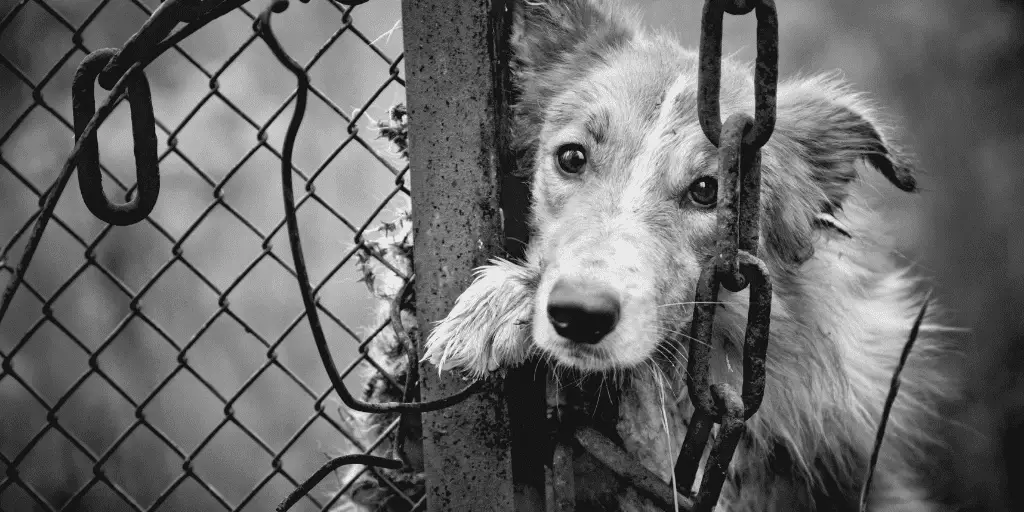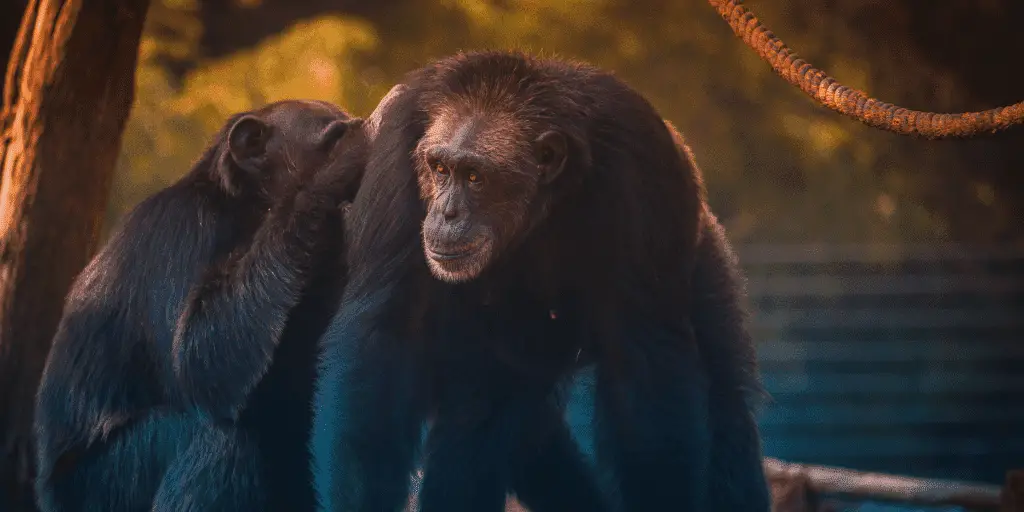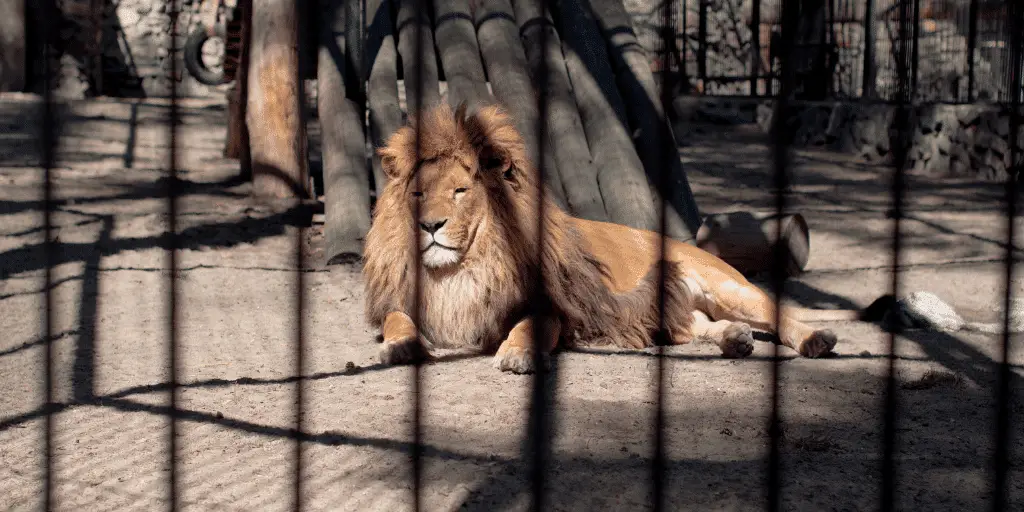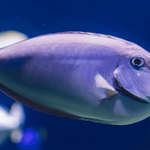Down Syndrome, a genetic condition in humans, is often mistakenly attributed to animals. This misconception has broader implications for public understanding of genetics, animal welfare, and ethical treatment.
By exploring the unique genetic makeup of animals, understanding common genetic conditions, and learning from documented cases of misidentified animals, we can foster accurate information dissemination and responsible animal care.
Dive into the science of genetics in animals and discover how ethical engagement and education play pivotal roles in shaping our understanding of the animal kingdom.
Key Takeaways:
- Down Syndrome is a specific genetic condition in humans, caused by an extra copy of chromosome 21, which is not directly translatable to animals due to differences in chromosomal structures and numbers.
- Mislabeling animal genetic conditions as Down Syndrome can spread misinformation, detract from scientific understanding, and potentially lead to inappropriate care.
- Accurate information about Down Syndrome is essential for creating appropriate support systems, medical care, and educational programs tailored to the needs of those affected by the condition.
- Animals have their own unique genetic mutations and health issues, unrelated to human chromosomal disorders, which require accurate identification for proper care and treatment.
- Responsible sharing of animal stories and images, with accurate and sensitive information, contributes to a broader understanding and appreciation of the animal kingdom, and prevents the spread of misinformation.
Addressing Animals with Down Syndrome
No animals have Down syndrome. It’s a specific human condition resulting from an extra copy of chromosome 21, which doesn’t occur in other species due to differences in chromosomal structures and numbers.
| Category | Details |
| Misconceptions about Down Syndrome | Symptoms and characteristics are not the same for everyone. Animals cannot have Down Syndrome as it is specific to humans. |
| Importance of Accurate Information | Accurate information is crucial to avoid stigma, misunderstanding, and to provide appropriate support and resources. |
| Myth of Animals with Down Syndrome | Animals may have chromosomal abnormalities, but these are not the same as human Down Syndrome. Mislabeling animal conditions as Down Syndrome spreads misinformation. |
| Case Studies of Misidentified Animals | Examples like Kenny the Tiger and Otto the Kitten illustrate the consequences of misidentifying animal conditions as Down Syndrome. |
| Ethical Considerations in Portraying Animals | Media and content creators have a responsibility to provide accurate, sensitive portrayal of animal conditions. Misrepresentation can lead to a skewed public perception and affect animal welfare. |
Understanding Down Syndrome

The Basics of Down Syndrome in Humans
Down Syndrome, a condition familiar to many, arises from a genetic variation where an individual has an extra copy of chromosome 21. This is known as Trisomy 21. Typically, a person inherits two copies of each chromosome, one from each parent, but in the case of Down Syndrome, three copies of chromosome 21 are present. This extra genetic material alters the course of development and leads to the characteristic features of Down Syndrome.
Individuals with Down Syndrome often have distinct physical attributes such as a flat facial profile, upward slanting eyes, and a single deep crease across the center of the palm.
Cognitive development also varies widely, but there is a range of mild to moderate intellectual disability associated with the condition. Early intervention, educational programs, and a supportive environment can greatly enhance the quality of life for those with Down Syndrome.
Diagnosis is typically made shortly after birth through a karyotype test that visualizes chromosomes. Understanding Down Syndrome in humans is crucial because it sets the stage for why this term doesn’t translate directly to animals. The genetic mechanisms in humans are well-researched and specific, providing a clear framework that doesn’t necessarily apply to other species.
Misconceptions and Clarifications
There are several misconceptions about Down Syndrome that oversimplify its complexity. One such misunderstanding is that the symptoms and characteristics are the same for everyone, which is not the case.
The condition manifests differently in each individual. Moreover, while Down Syndrome is a specific chromosomal condition in humans, attributing the term to animals is not scientifically accurate. Animals can have chromosomal abnormalities, but these are not the same as human Down Syndrome.
Using precise language when discussing genetic conditions is vital. Mislabeling an animal’s condition as Down Syndrome can spread misinformation and detract from the scientific understanding of their actual genetic status. It’s important to recognize the differences and avoid anthropomorphizing animal conditions based on human diagnoses.
Importance of Accurate Information
The dissemination of accurate information about Down Syndrome is essential for both societal and medical reasons. Misinformation can lead to stigma and misunderstanding, which in turn can result in inadequate support and resources for individuals with Down Syndrome.
Accurate knowledge helps in creating appropriate educational programs, medical care, and support systems that are tailored to the needs of those affected by the condition.
Education plays a pivotal role in fostering a supportive and informed community. It’s through understanding the nuances of Down Syndrome that people can become better allies and advocates for those with the condition.
Ensuring that discussions about genetic conditions are grounded in science and fact is a responsibility that benefits everyone, creating a more inclusive and knowledgeable society.
The Myth of Animals with Down Syndrome

Debunking the Myth
When scrolling through the internet, it’s not uncommon to stumble upon images of animals with features that tug at the heartstrings, often accompanied by captions suggesting they have Down Syndrome.
This myth has gained traction online, largely due to the human tendency to anthropomorphize animals, attributing human characteristics to non-human entities. It’s a natural human response to relate to animals in this way, but it’s important to understand that the genetic condition of Down Syndrome, as it occurs in humans, is specific to our species.
Humans have 23 pairs of chromosomes, and Down Syndrome is characterized by an extra copy of chromosome 21. Animals, on the other hand, have different numbers of chromosomes that don’t align with human chromosome pairs. Therefore, while animals can have their own genetic mutations and health issues, they cannot have Down Syndrome in the way humans do.
Scientific evidence clearly indicates that the genetic makeup of animals is fundamentally different, making such a direct comparison inaccurate.
The Role of Internet and Social Media
The internet and social media platforms are powerful tools that can quickly spread information—and misinformation. Viral content featuring animals with unusual features can rapidly gain popularity, with claims that these animals have Down Syndrome. These stories often pull at the heartstrings and are shared widely without proper fact-checking.
A classic example is the story of Kenny, a white tiger with a distinctive face that many claimed was due to Down Syndrome. In reality, Kenny’s features were the result of inbreeding and not a chromosomal condition akin to Down Syndrome.
The lack of critical evaluation and the sensationalism that often accompanies such content contribute to the persistence of this myth, leading to a widespread misunderstanding of animal genetics.
Consequences of the Misconception
The misconception that animals can have Down Syndrome has broader implications for public understanding of genetics, animal welfare, and ethical treatment. When such myths are perpetuated, they can lead to misguided sympathies and misinformed animal care practices.
For instance, people might focus on the emotional appeal of an animal’s appearance rather than its actual health needs, which can result in overlooking real welfare issues. Additionally, this misunderstanding can overshadow the need for responsible breeding practices and proper care for animals with genuine health problems.
It’s crucial to approach animal welfare with accurate information to ensure that animals receive the care and attention they truly need, rather than care based on misinterpreted conditions.
Case Studies of Misidentified Animals
Kenny the Tiger – A Case of Misidentification
Kenny the tiger became a well-known figure due to his unique appearance, which led many to believe he had Down Syndrome. However, Kenny’s story is rooted in the darker side of animal breeding.
Born in a United States breeding facility, Kenny was a victim of inbreeding, a practice often used to produce white tigers, which are popular in zoos and with private collectors. This inbreeding resulted in a host of genetic problems for Kenny, including physical deformities that affected his face.
His unusual features, which included a broad face and a misshapen jaw, were mistakenly attributed to Down Syndrome, a genetic disorder caused by a trisomy of chromosome 21, which is specific to humans.
The spread of misinformation about Kenny’s condition was rapid, as his striking appearance captured the public’s imagination. Wildlife sanctuaries that cared for Kenny worked tirelessly not only to provide him with the specialized care he needed but also to educate the public about the consequences of inbreeding and the importance of genetic health in animals.
Otto the Kitten and Other Misidentified Cases
Otto the kitten is another example of an animal that captured hearts around the world after being misidentified as having Down Syndrome. Like Kenny, Otto’s facial features prompted this incorrect diagnosis. However, Otto and other animals in similar situations often suffer from completely different health issues unrelated to human chromosomal disorders.
When stories like Otto’s go viral, they contribute to the perpetuation of myths surrounding animal health. It’s crucial to understand the actual conditions affecting these animals to ensure they receive the appropriate care. Misdiagnoses can lead to well-intentioned but ultimately harmful treatments and obscure the real medical attention these animals require.
The Science of Genetics in Animals

Genetic Makeup and Chromosomal Differences
Diving into the world of animal genetics, it’s fascinating to see how the blueprint of life varies across species. Chromosomes, those tiny packages of genes, are the heart of genetic diversity.
Humans typically have 23 pairs of chromosomes, but animals? They can have a range that’s as wide as the animal kingdom itself. For instance, dogs have 39 pairs, while chickens boast a count of 39 pairs too, but of a different structure.
This is where the conversation about Down Syndrome in animals gets interesting. Down Syndrome is a human-specific condition caused by an extra copy of chromosome 21. Since animals have different numbers and structures of chromosomes, they simply cannot have Down Syndrome as it is known in humans.
It’s like trying to fit a square peg in a round hole – the pieces just don’t match up. The diversity in genetic makeup among species is not just a curiosity; it’s crucial to their health, development, and the intricate balance of ecosystems.
Common Genetic Conditions in Animals
While animals can’t have Down Syndrome, they are not immune to genetic conditions. These can range from the mild to the severe, often influenced by factors like inbreeding and spontaneous mutations.
For example, domesticated animals such as purebred dogs can suffer from conditions like hip dysplasia or heart defects due to selective breeding practices. In the wild, genetic mutations might lead to unique color variations or even survival disadvantages.
Understanding these conditions is vital for anyone involved in animal care or breeding. It’s not just about avoiding health issues; it’s about ensuring the well-being and longevity of species. Knowledge of animal genetics informs responsible breeding practices and helps caretakers provide the best possible care for animals with special needs.
The Role of Genetic Research in Animal Health
Genetic research is a beacon of hope for animal health and welfare. With each breakthrough, scientists unlock new ways to diagnose, treat, and prevent genetic conditions in animals.
This research doesn’t just benefit domesticated animals; it’s a game-changer for wildlife conservation. By understanding the genetic health of endangered species, conservationists can make more informed decisions that boost the chances of survival for these precious animals.
Moreover, genetic research holds the key to ethical treatment of animals in captivity. It can guide how animals are housed, fed, and bred to minimize stress and maximize quality of life. The ripple effects of this research are profound, touching every aspect of how humans interact with the animal kingdom.
The Case of Apes and Chromosome 22

Chromosomal Anomalies in Apes
When exploring the genetic landscape of apes, a fascinating discovery emerges: some apes exhibit a genetic defect that is strikingly similar to Down Syndrome in humans.
This condition arises due to an extra copy of chromosome 22. While humans have 23 pairs of chromosomes, apes have 24, and it’s their chromosome 22 that is the equivalent of human chromosome 21, which, when triplicated, leads to Down Syndrome.
Although the conditions are analogous, they’re not identical due to the differences in the genetic makeup between the two species. The extra chromosome in apes can lead to physical and cognitive symptoms reminiscent of Down Syndrome, but the expression of these symptoms can vary due to the genetic divergence between humans and apes.
Documented Cases and Their Significance
Documented instances of apes with this chromosomal anomaly are rare, but they offer a wealth of knowledge. In these cases, apes have displayed symptoms such as congenital heart defects, impaired immune function, and developmental delays, mirroring some aspects of Down Syndrome in humans.
The significance of these observations extends beyond the individual cases; they provide a window into the complex world of genetics that transcends species boundaries. By studying these apes, scientists can gain insights into how genetic conditions manifest in different species, enhancing our understanding of genetic disorders and the potential for treatments and interventions.
Implications for Genetic Research and Conservation
The study of chromosomal anomalies in apes has profound implications for genetic research. It allows scientists to investigate the effects of extra chromosomes across species, offering a comparative approach to understanding genetic disorders. This research is not only academically intriguing but also has practical applications in conservation.
By understanding the genetic health of ape populations, particularly those that are endangered, conservationists can develop strategies to manage and preserve these species. The knowledge gained from studying apes with an extra chromosome 22 can inform breeding programs, healthcare, and ultimately aid in the survival of these remarkable animals.
Ethical Considerations in Portraying Animals
The Responsibility of Media and Content Creators
When it comes to sharing stories and images of animals, especially those that might have health conditions, there’s a big responsibility on the shoulders of media outlets, content creators, and even everyday social media users. It’s crucial to ensure that the information shared is accurate, sensitive, and responsible.
This is particularly important for topics that can be sensationalized or misunderstood, like attributing human-like conditions such as Down syndrome to animals. The way these stories are told can shape how people think and feel about animals, and it’s important to avoid spreading misinformation or creating false narratives that could mislead the public.
The Impact of Misrepresentation on Public Perception
Imagine seeing a picture of an animal with a caption that suggests it has Down syndrome. It might tug at your heartstrings, but here’s the thing: animals don’t experience Down syndrome in the same way humans do. Misrepresenting animal health conditions can lead to a skewed public perception, where people start to believe that animals can have the same genetic conditions as humans.
This not only confuses the understanding of animal welfare and genetics but can also lead to the harmful trend of anthropomorphizing animals. When we start to see animals as little humans in fur coats, we’re not seeing them for what they truly are, and that can lead to unrealistic expectations and even inappropriate care.
Promoting Ethical Engagement and Education
So, how do we fix this? Education and ethical engagement are key. By fostering informed public discourse and sharing responsible content, we can help everyone get a clearer picture of animal health and welfare. It’s about creating a space where people can learn and talk about these issues without falling into the trap of cute but incorrect assumptions.
When content creators and sharers take the time to do their research and present information in a thoughtful way, they’re not just telling a story—they’re contributing to a broader understanding and appreciation of the animal kingdom. And that’s something that benefits us all, two-legged or four-legged.
The Role of Zoos and Wildlife Reserves

Conservation Efforts and Genetic Health Management
Zoos and wildlife reserves are not just about showcasing the wonders of the animal kingdom; they play a crucial role in the conservation of species and the management of their genetic health.
To prevent inbreeding and genetic disorders, which can be detrimental to animal populations, these institutions implement rigorous practices and policies. For instance, the American Zoological Association has taken a strong stance against certain breeding practices that could harm the genetic diversity of captive animals.
By carefully managing breeding programs, zoos contribute to maintaining biodiversity and healthy genetic pools. Successful conservation programs, such as the reintroduction of once-endangered species back into the wild, underscore the positive impact of these efforts. These initiatives not only help in the survival of species but also ensure the resilience of ecosystems by preserving a robust gene pool.
Educational Role of Zoos and Reserves
Beyond their conservation efforts, zoos and wildlife reserves serve as vital educational platforms. They provide the public with accurate information about animals, including their health and the challenges they face in the wild. These institutions are instrumental in debunking myths, such as the notion of animals with Down syndrome, and instead promote awareness about real genetic conditions that can affect animal populations.
Through interactive exhibits, guided tours, and educational programs, zoos and reserves engage visitors in the narrative of wildlife conservation and the importance of genetic health. For example, many institutions host talks and workshops that explain the complexities of animal genetics and the importance of preserving genetic diversity for the well-being of all species.
Ethical Considerations in Animal Care and Display
The care, display, and breeding of animals in zoos and wildlife reserves come with a host of ethical considerations. It’s a delicate balance to strike between the overarching goals of conservation and the welfare of individual animals. Ethical implications arise particularly in breeding programs, where the focus on genetic health must be weighed against the quality of life for each animal.
Zoos and reserves are governed by standards and regulations that ensure the ethical treatment of animals under their care. These guidelines dictate everything from the size and enrichment of habitats to the social structures maintained within animal communities.
By adhering to these ethical standards, zoos and reserves not only foster the well-being of their animal inhabitants but also set an example for how humans should responsibly interact with the natural world.
Conclusion
In conclusion, Down Syndrome is a specific genetic condition in humans, caused by an extra copy of chromosome 21, which does not directly translate to animals. Animals have different chromosomal structures and cannot develop Down Syndrome as humans do.
Mislabeling animal genetic conditions as Down Syndrome can spread misinformation and hinder accurate understanding of animal genetics. It’s crucial to appreciate the unique genetic makeup of each species and foster a society grounded in scientific knowledge and ethical treatment of animals.
Zoos, wildlife reserves, and educational platforms play a vital role in promoting responsible information sharing, conservation efforts, and genetic health management.
By fostering informed discussions and ethical engagement, we can enhance our appreciation of the animal kingdom and contribute to a more inclusive, knowledgeable society.
- What Should I Do If A Koala Bites Me? Safety Guide - 2024-05-30
- Are Kangaroos Born Without Hind Legs? A Fascinating Journey - 2024-05-30
- Animals That Look Like Squirrels - 2024-05-30









